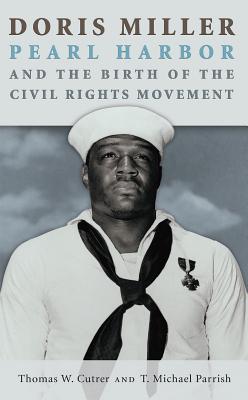
Cutrer, Thomas W.
product information
description
4On the morning of December 7, 1941, after serving breakfast and turning his attention to laundry services aboard the USS West Virginia, Ship's Cook Third Class Doris "Dorie" Miller heard the alarm calling sailors to battle stations. The first of several torpedoes dropped from Japanese aircraft had struck the American battleship. Miller hastily made his way to a central point and was soon called to the bridge by Lt. Com. Doir C. Johnson to assist the mortally wounded ship's captain, Mervyn Bennion. Miller then joined two others in loading and firing an unmanned anti-aircraft machine gun--a weapon that, as an African American in a segregated military, Miller had not been trained to operate. But he did, firing the weapon on attacking Japanese aircraft until the .50-caliber gun ran out of ammunition. For these actions, Miller was later awarded the Navy Cross, the third-highest naval award for combat gallantry. Historians Thomas W. Cutrer and T. Michael Parrish have not only painstakingly reconstructed Miller's inspiring actions on December 7. They also offer for the first time a full biography of Miller placed in the larger context of African American service in the United States military and the beginnings of the civil rights movement. Like so many sailors and soldiers in World War II, Doris Miller's life was cut short. Just two years after the attack on Pearl Harbor, Miller was aboard the USS Liscome Bay when it was sunk by a Japanese submarine. But the name--and symbolic image--of Dorie Miller lived on. As Cutrer and Parrish conclude, "Dorie Miller's actions at Pearl Harbor, and the legend that they engendered, were directly responsible for helping to roll back the navy's then-to-fore unrelenting policy of racial segregation and prejudice, and, in the chain of events, helped to launch the civil rights movement of the 1960s that brought an end to the worst of America's racial intolerance."
member goods
No member items were found under this heading.
Return Policy
All sales are final
Shipping
No special shipping considerations available.
Shipping fees determined at checkout.







